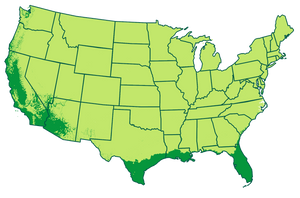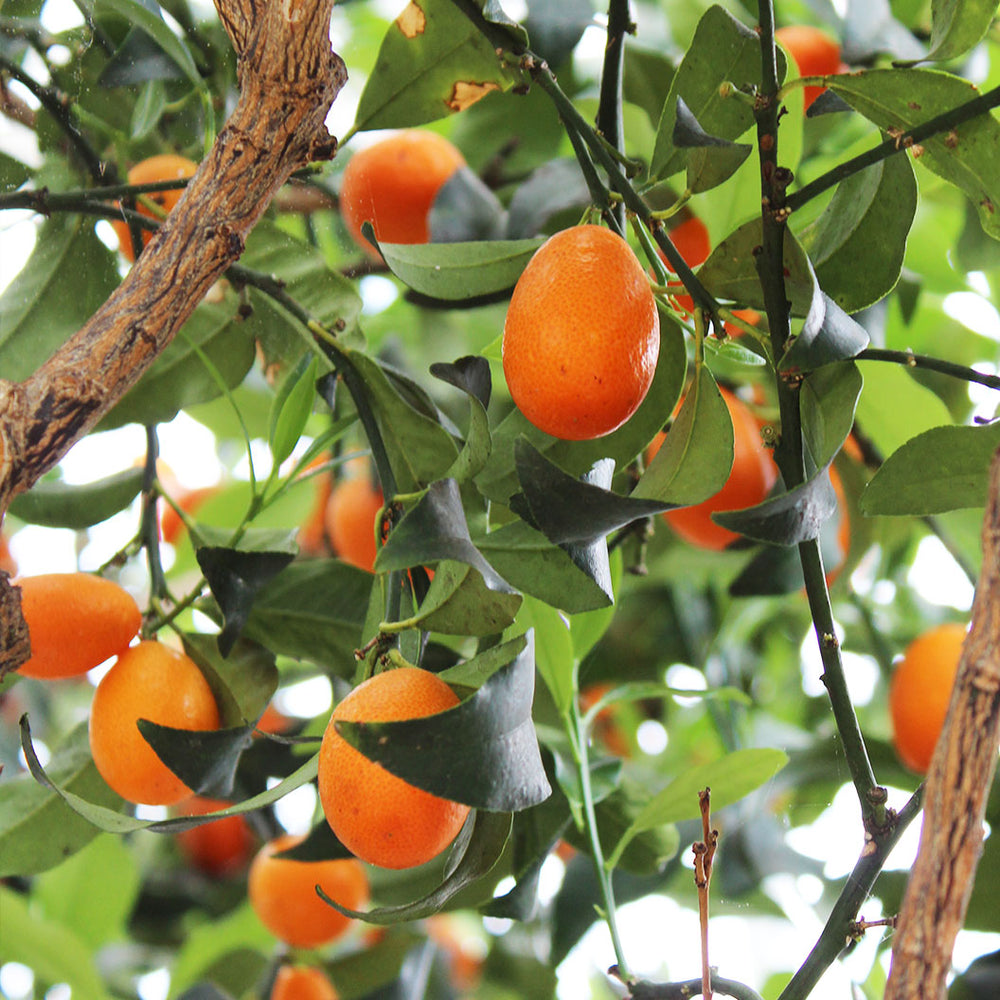* Images shown are of mature plants

Have questions? Talk with our Plant Experts (800) 973-8959
Delicious, Juicy Fruit That's a Mix of Kumquats and Mandarins
Turn your yard into an orchard with the indescribable Indio Mandarinquat Tree! This unique fruit offers evergreen leaves and seasons of vivid orange fruit for a colorful display that will transform any green space.
This fruit is the perfect blend of a kumquat and mandarin, and you can eat both the sweet flesh and tart center for a healthy snack straight from the tree. It even has a delectable fragrance to turn your edible landscape into an aromatic garden.
Plus, this tree comes in a semi-dwarf size, making it a must for containers, smaller yards, hedges, and more. Enjoy spring blooming and a winter harvest for seasons of juicy fruit that are packed with vitamin C!
With the self-fertile Indio Mandarinquat Tree, you won't need more than one for heavy fruit production (although you may be tempted to plant multiple in your yard). Buy yours today!
Pollination Info
Indio Mandarinquat Tree Pollination
Indio Mandarinquat Trees are self-fertile. You will get fruit with only one plant. However, adding an additional Indio Mandarinquat Tree will drastically increase the size of your crop.
Planting & Care
1. Planting: Select a location that receives at least 8 hours of sunlight each day. A semi-dwarf tree needs a space of 8 to 10 feet in diameter, while citrus trees can be planted closer together for a hedge or multi-variety bush. Ensure the area is sunny, protected from frost and wind, and has southern exposure. Water as needed, and within a week or two, you should see if the trees are thriving.
Citrus trees are sensitive to freezing temperatures and need protection outdoors. If inadequate, consider growing them indoors by a sunny window, avoiding proximity to heat vents that can harm the roots.
For in-ground planting, choose a well-drained spot and prepare loose soil, making the area at least three times the pot’s diameter. Dig a hole twice as wide and as deep as the root ball, ensuring the tree remains straight. Backfill up to the crown of the roots without burying them, and water deeply after planting.
2. Watering: It’s best to allow the top of the soil to dry out between waterings. Use a moisture meter from garden supply stores to measure moisture at a depth of about 9 inches. When it indicates around 50% moisture (the center of the dial), it’s time to water.
If a wilted tree perks up within 24 hours of watering, the roots were too dry. Adjust your watering schedule as needed. Yellow or cupped leaves may indicate overwatering. In that case, reduce the watering frequency.
Citrus trees thrive with less frequent, deep watering. Create a watering basin around the tree’s drip line to help with deep watering and expand it as the tree grows. Once-a-week watering generally works for in-ground and container plants, but adjust based on weather. Watering in the morning is ideal, but if plants are dry or wilted, water them right away.
3. Fertilizing: During the spring, summer, and early fall months, fertilize the tree with a balanced fertilizer once a month, following the manufacturer's instructions.
4. Pruning: In early spring, prune your tree to maintain its shape and remove any dead or diseased branches. A semi-dwarf citrus tree can grow 10 to 15 feet but can be kept smaller with careful pruning.
Identify the graft union, usually a diagonal scar 4 to 8 inches above the soil, and remove all shoots below this point, known as "suckers." These suckers take energy from the fruiting wood, especially on young trees, so remove them as soon as you see them.
5. Pollination: Self-pollinating plants do not require additional plants for fruiting, but other citrus trees can increase fruit production.
Shipping Details
Estimated Shipping Time: Most orders ship immediately. As noted on the website, some items are seasonal, and may only ship in spring or fall. Once your order is shipped, you'll receive an email with a tracking number.
| Amount of Order | Shipping Charge |
|---|---|
| Less than $49 | $19.95 |
| $49 + | FREE SHIPPING! |
Product Details
| Mature Height: | 8-12 ft. |
| Mature Width: | 6-10 ft. |
| Sunlight: | Full Sun |
| Blooms: | Spring |
| Growth Rate: | Moderate Growing |
| Harvest Time: | Winter |
| Botanical Name: | Citrus reticulata x Fortunella |
| Does Not Ship To: | AK, AL, AZ, CA, FL, HI, LA, MS, OR, TX |
| Grows Well In Zones: | 3-11 patio / 9-11 outdoors |
| Your Growing Zone: | # |





